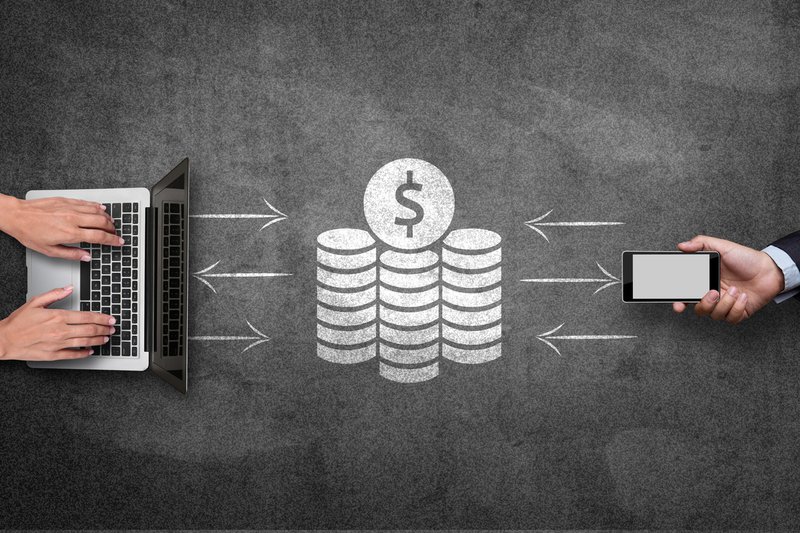
Rob Carrick
Oct. 9, 2020
So much change is being crammed down our throats these days, most of it negative because it involves workarounds, takeaways and deprivation to quell the spread of COVID-19.
For an example of a helpful change brought by the pandemic, consider the rise of the cheque-killing e-transfer.
E-transfers have taken off with younger people in recent years, but many older Canadians have stuck to the familiar old cheque as a way to send someone money or pay for services such as home maintenance. The pandemic has accelerated the broad switch to e-transfers because they’re sent electronically and are thus ideal for a physically distanced, hand-sanitized world. Let’s see if some coaching on e-transfers can help turn cheques into the fringe payment method they deserve to be in an electronic world:

HOW MANY PEOPLE ARE USING E-TRANSFER?
The Interac banking network reports that a daily average of 2.1 million Canadian e-transfers have been sent daily since April 1 and that the number of senders has grown by 18 per cent since February.
HOW DO YOU SEND AND RECEIVE AN INTERAC E-TRANSFER?
Go to the e-transfer section of your online banking website or mobile app and start a request to send money. Add the name of the recipient plus e-mail and/or mobile phone number and then specify the amount. Next, think of a security question for the recipient to answer to validate that the e-transfer is going to the right person.
“The security question should be highly confidential,” said William Keliehor, chief commercial officer for Interac. “We try to make it as easy as we can on the person receiving the transfer, but the security question needs to be a strong one and known only to the two people that are exchanging money.”
When you receive an e-transfer, you’ll choose your bank or credit union from the list of available institutions, log in to your mobile or online banking portal and answer the security question. Never accept e-transfers from people you don’t know because they could be phishing scams aimed at stealing your personal information.
HOW SECURE ARE E-TRANSFERS?
E-transfer texts and e-mails are just for notification – money is actually transferred through the banking network. However, there have been cases of hackers intercepting an e-transfer notification e-mail and using it to deposit the money (CTV journalist Pat Foran recently reported one such occurrence).
For this kind of fraud to happen, the hacker would need access to the recipient’s e-mail and be able to guess the answer to the security question in an e-transfer. Banks assess whether to reimburse e-transfer fraud victims on a case-by-case basis and will scrutinize how well clients followed security procedures. You’re expected to take proper care of your e-mail password by changing it frequently and by using a unique combination of letters and numbers. Again, senders of e-transfers should use a strong security question, not something basic like the name of the recipient’s street, spouse’s name or birthday.
“An e-transfer is safe, it’s secure, it’s sound,” Mr. Keliehor said. “I like to say it’s safer than cheques and safer than cash. There are fewer points for failure in an e-transfer transaction than there is with trading of cheques or cash.”
A final thought on security: Sign up for auto deposit of e-transfers sent to you. The money goes right into an account designated by you, with no security question and thus no opportunity for a hacker to intercept the money.
HOW FAST ARE E-TRANSFERS?
Mr. Keliehor said the recipient receives the notification e-mail or text as quickly as any other electronic communication and deposit happens immediately after the recipient deposits the money (or auto-deposit processes the transaction). A big win for e-transfer recipients is that there’s no hold on the money. It’s instantly available to the recipient. A big win for senders is that the recipient can’t procrastinate endlessly and then cash your cheque at an inopportune moment for you.
DO I HAVE TO PAY EXTRA FOR E-TRANSFERS BEYOND MY USUAL ACCOUNT FEES?
E-transfers at one time cost $1.50 apiece, but banks and credit unions are increasingly treating them like regular debits or withdrawals and including them in your monthly account package at no extra cost. Banks are encouraging the use of e-transfers because they’re less expensive than handling cheques and cash.
HOW WIDELY CAN I USE E-TRANSFERS?
The Interac network includes more than 250 financial institutions and e-transfers can be used to pay individuals, tradespeople and service providers. In addition to reimbursing friends and family, I have used e-transfers for wedding gifts and to pay for home renovations and physiotherapy sessions.
This Globe and Mail article was legally licensed by AdvisorStream.
© Copyright 2024 The Globe and Mail Inc. All rights reserved.


